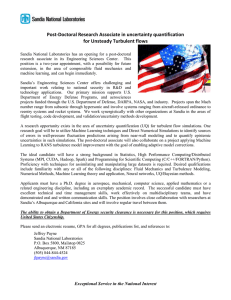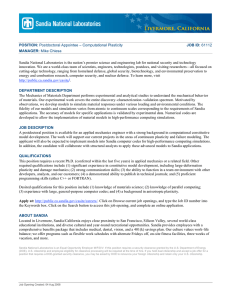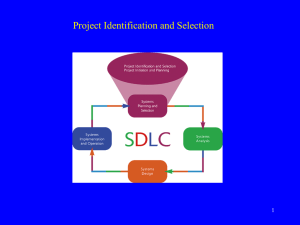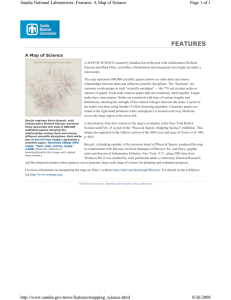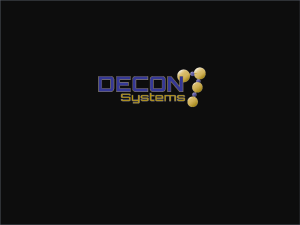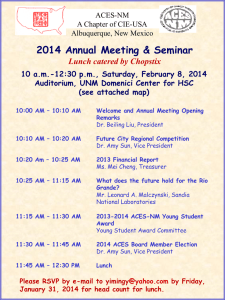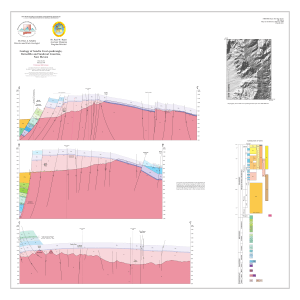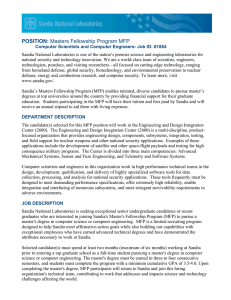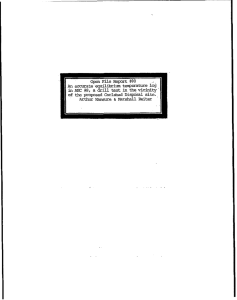Computer-Aided Engineering Approach towards Bottom-up and Top-Down Nanomanufacturing
advertisement
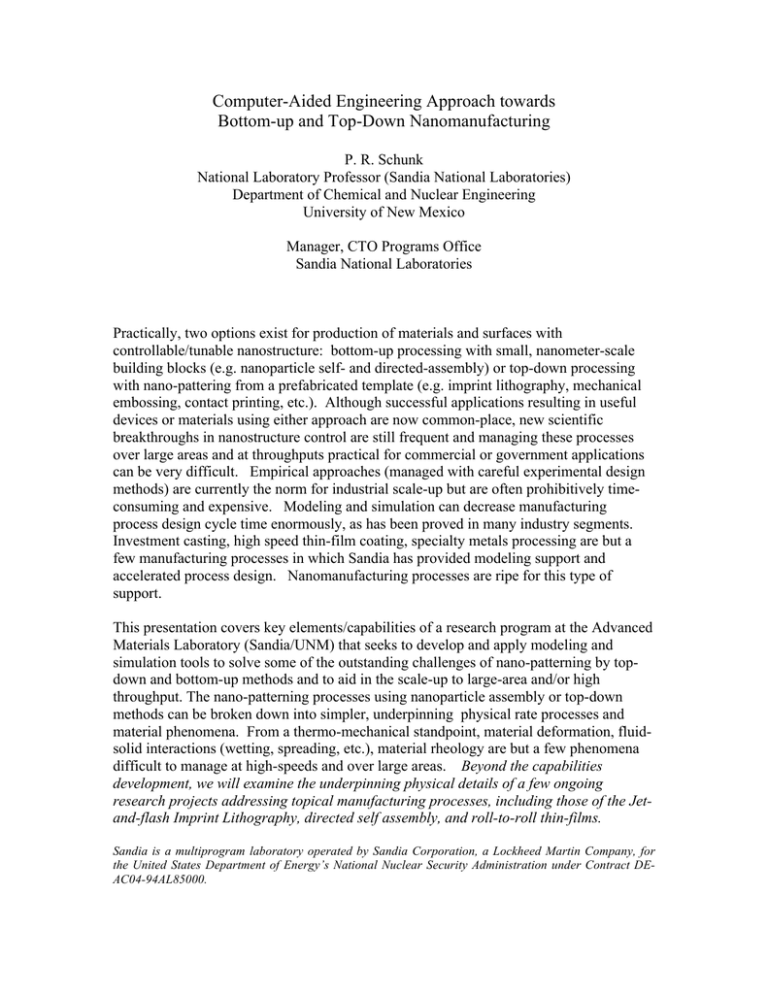
Computer-Aided Engineering Approach towards Bottom-up and Top-Down Nanomanufacturing P. R. Schunk National Laboratory Professor (Sandia National Laboratories) Department of Chemical and Nuclear Engineering University of New Mexico Manager, CTO Programs Office Sandia National Laboratories Practically, two options exist for production of materials and surfaces with controllable/tunable nanostructure: bottom-up processing with small, nanometer-scale building blocks (e.g. nanoparticle self- and directed-assembly) or top-down processing with nano-pattering from a prefabricated template (e.g. imprint lithography, mechanical embossing, contact printing, etc.). Although successful applications resulting in useful devices or materials using either approach are now common-place, new scientific breakthroughs in nanostructure control are still frequent and managing these processes over large areas and at throughputs practical for commercial or government applications can be very difficult. Empirical approaches (managed with careful experimental design methods) are currently the norm for industrial scale-up but are often prohibitively timeconsuming and expensive. Modeling and simulation can decrease manufacturing process design cycle time enormously, as has been proved in many industry segments. Investment casting, high speed thin-film coating, specialty metals processing are but a few manufacturing processes in which Sandia has provided modeling support and accelerated process design. Nanomanufacturing processes are ripe for this type of support. This presentation covers key elements/capabilities of a research program at the Advanced Materials Laboratory (Sandia/UNM) that seeks to develop and apply modeling and simulation tools to solve some of the outstanding challenges of nano-patterning by topdown and bottom-up methods and to aid in the scale-up to large-area and/or high throughput. The nano-patterning processes using nanoparticle assembly or top-down methods can be broken down into simpler, underpinning physical rate processes and material phenomena. From a thermo-mechanical standpoint, material deformation, fluidsolid interactions (wetting, spreading, etc.), material rheology are but a few phenomena difficult to manage at high-speeds and over large areas. Beyond the capabilities development, we will examine the underpinning physical details of a few ongoing research projects addressing topical manufacturing processes, including those of the Jetand-flash Imprint Lithography, directed self assembly, and roll-to-roll thin-films. Sandia is a multiprogram laboratory operated by Sandia Corporation, a Lockheed Martin Company, for the United States Department of Energy’s National Nuclear Security Administration under Contract DEAC04-94AL85000.
